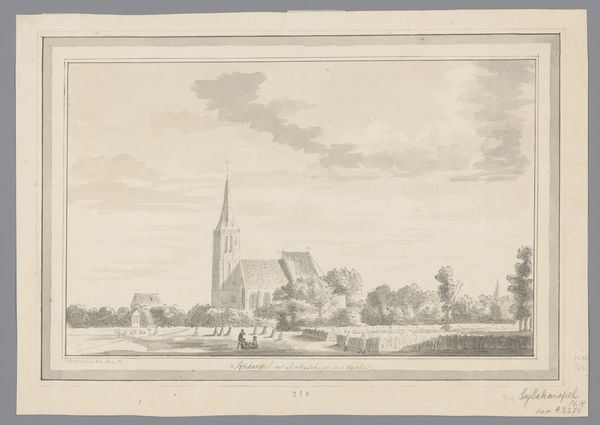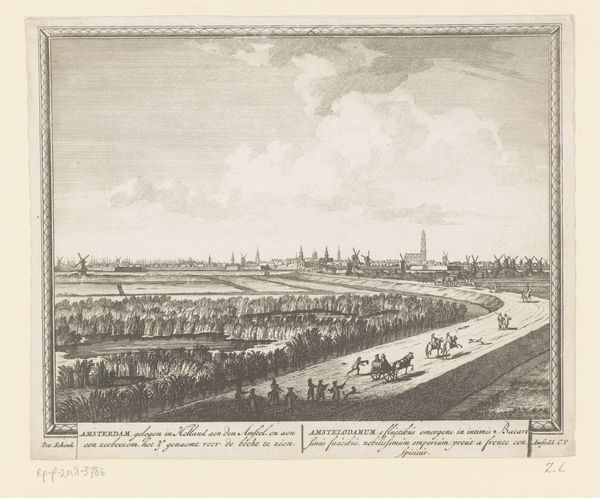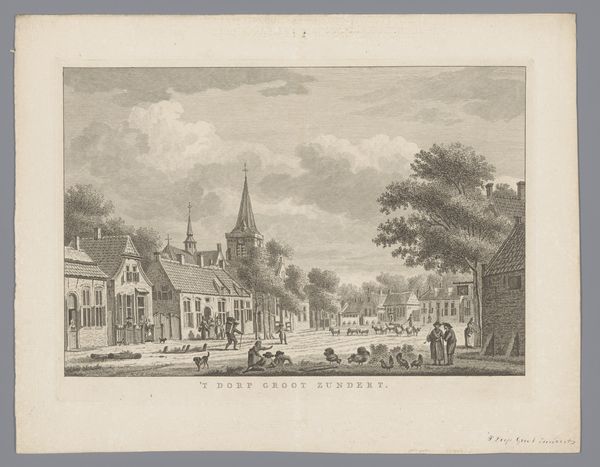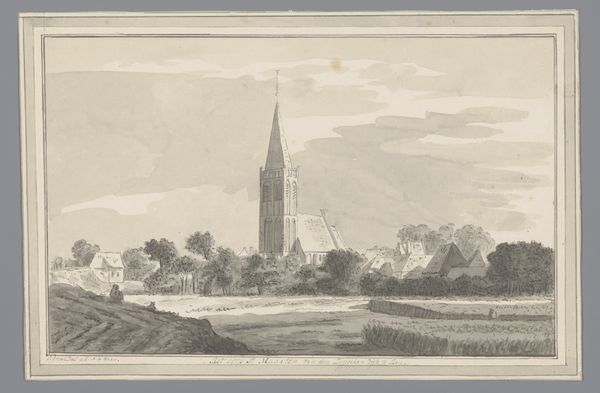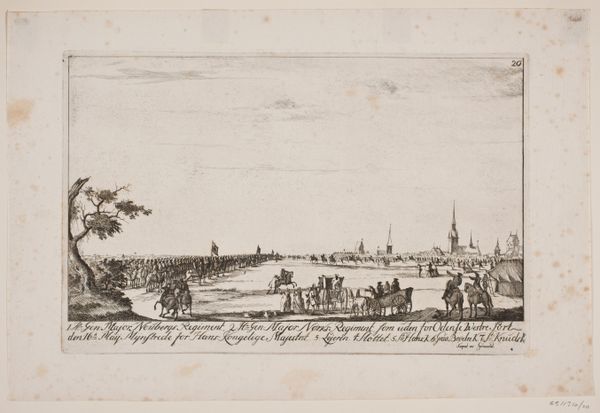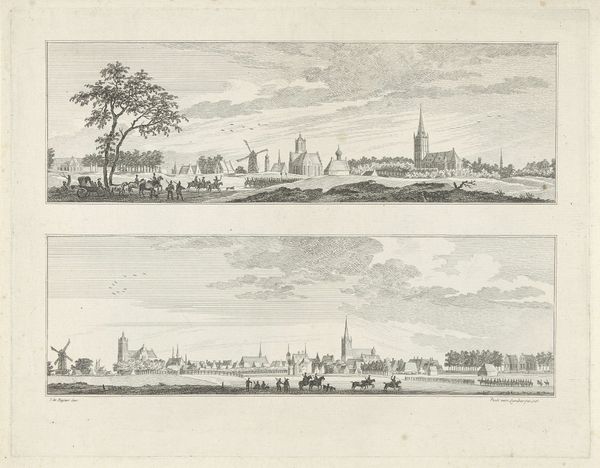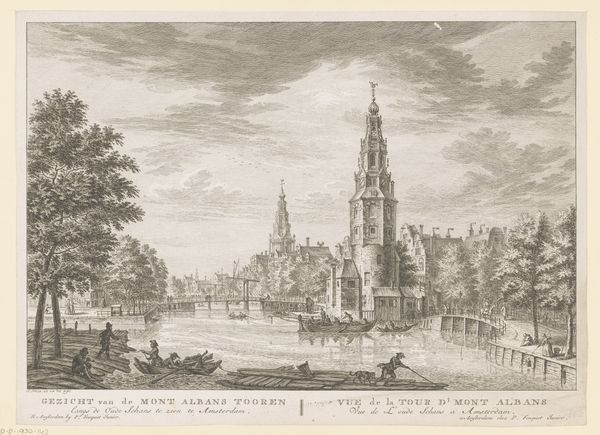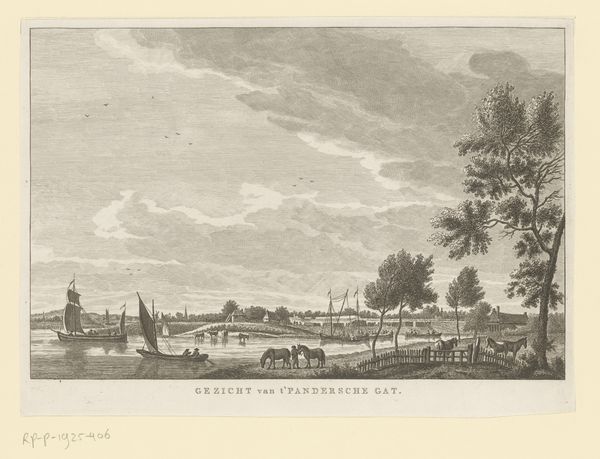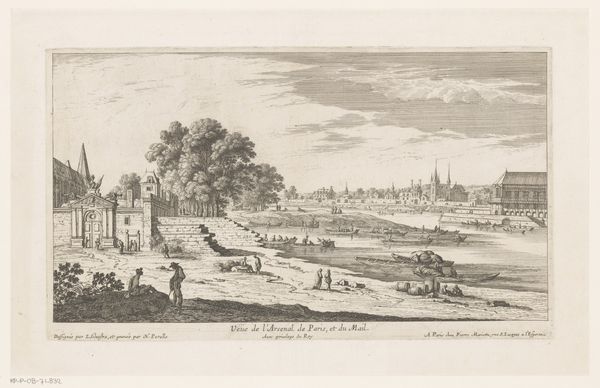
drawing, print, etching, engraving
#
drawing
#
neoclacissism
#
baroque
# print
#
etching
#
landscape
#
cityscape
#
engraving
Dimensions: height 192 mm, width 355 mm
Copyright: Rijks Museum: Open Domain
Curator: Paulus van Liender created this etching with engraving around 1760, titled “View of Amersfoort.” Editor: It’s a lovely, idyllic scene, but something about the monochrome palette and tight, controlled lines gives it a feeling of almost austere observation. Curator: Observe how Van Liender meticulously renders the cityscape of Amersfoort from an elevated perspective. The St. George’s Church dominates the skyline, a clear symbol of power and continuity. Do you notice the figures in the foreground, carefully placed, leading toward the city gates, that contribute to the scene’s balance? Editor: Absolutely. And in many ways the image encapsulates that mid-18th-century tension between an idealized rural past and burgeoning urbanization. The foreground feels almost pastoral – figures working, resting. But beyond them, the tightly packed city anticipates modernity. Also, the imposing church and even the windmills seem to serve to underline an inflexible social structure. Curator: Windmills symbolize progress, sure, but on another level, they represent technological advancement harmonizing with nature; and on another level they represent the Protestant work ethic which sustained the social values of the period. You could also argue that they also illustrate a struggle, a turning of the wheels against nature to prosper. Editor: Right, because underneath this picturesque surface lies so many competing forces. Look at the precision of the lines – the city rendered so clearly against those almost billowing clouds. It feels less like an actual lived space and more like a carefully constructed model meant to impart some moral or even political lesson. And do the figures share in this, as representations, standing for workers toiling for their livelihood in their community? Curator: What resonates most is how Van Liender is embedding cultural memories, showing an orderly world of social values and aspiration, to make that continuity possible. The etching becomes an artifact of cultural identity, in this vision of Amersfoort, an essence or ideal, more than a physical place. Editor: Yes, I appreciate how situating the image within a historical and social context challenges our perception. Van Liender’s work really does more than depict a scene. It asks us to reconsider our place within it, or how that society at that time wanted the world to be viewed by its inhabitants.
Comments
No comments
Be the first to comment and join the conversation on the ultimate creative platform.
